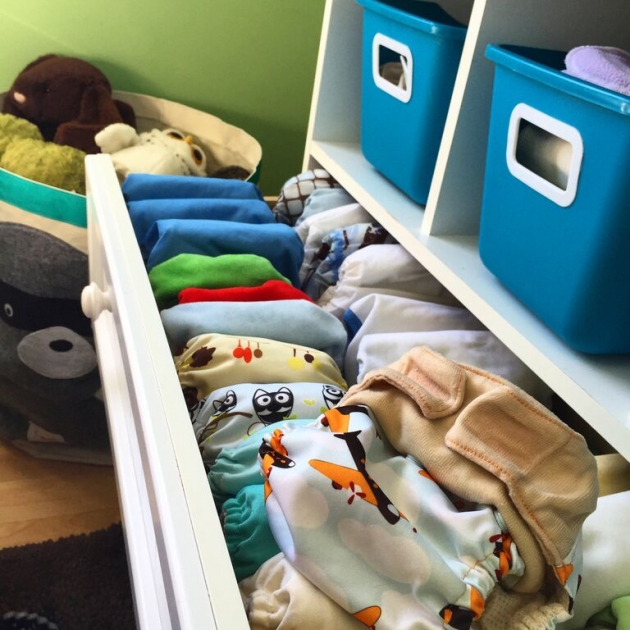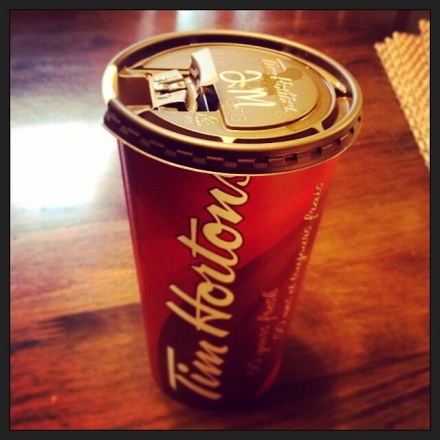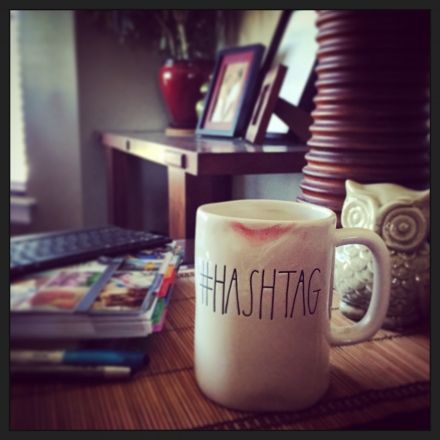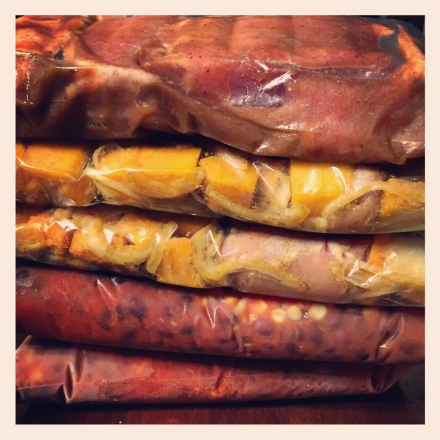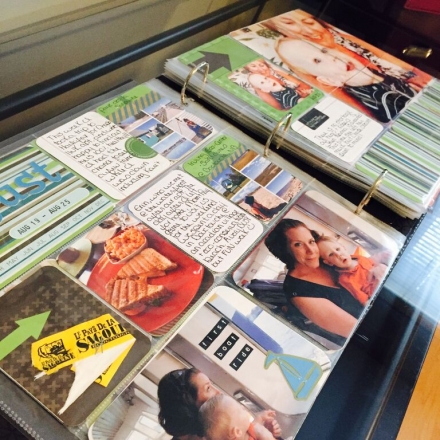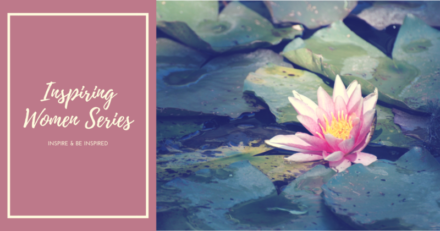Many people cloth diaper newborns and from what I’ve heard, it’s best to either use a newborn specific diaper or a pre-fold which can be folded to a customized fit. I can’t speak on experience with cloth diapering a newborn because we chose to use disposable since our diaper collection consists of only one-size diapers which didn’t fit Chase until he was about 12 lbs. This worked well for us since he was our first and it gave us some time to figure out our routine before being faced with yet another challenge of figuring out cloth diapers. It was a little overwhelming as we geared up to take the plunge but we made the transition gradually by sticking with disposable at night and on outings. Eventually we began night-time cloth diapering and found the hybrid diapers to be a great solution for day trips.
How many diapers?
When deciding how many cloth diapers you should purchase, consider the following:
- The age of your child – A newborn might go through 8-12, where an older child might use 6-8 diapers a day
- The type of diaper – If you use sized diapers, you might want 15 in each size compared to 15 total of a one size diaper. If you use fitted or hybrid diapers, you will reuse the shell several times so you would need more inserts than shells.
- Tolerance for washing – Most people wash diapers every 2-3 days so do the math using the above considerations.
I have a much larger collection than we actually need…partly because I struggled with a bit of a cloth diapering addiction when we first started and partly because I wanted to try different brands and types of diapers. At this point we have enough to last us 50 diaper changes and have about 40 diapers total. I know this sounds shameful but if you get to know the cloth diapering community, you would find my collection is actually quite modest. Realistically, you could function with 20 diapers total if you wash every 2 days and you wouldn’t have to worry about running out while washing.
Cloth diapering essentials
Aside from cloth diapers themselves and the inserts and boosters to make them absorbent, this list includes the basic supplies needed to get started:
- Cloth diaper safe detergent – A detergent free of whiteners, brighteners, enzymes and additives will keep your diapers absorbent and prevent repelling. Check out this link for an awesome review of cloth diaper safe detergents Diaper safe detergents
- Diaper pail – You will need a convenient place to keep your dirty diapers until they are ready for washing. It can be as simple as a plastic or fabric bag hanging on the back of the door, a plastic garbage pail or a diaper pail designed especially for cloth diapers. One option is to use a wet pail which supposedly decreases staining and odours. Keep in mind that a wet pail can be a hazard to curious toddlers.
- Cloth diaper safe rash cream – Most petroleum and zinc based products can gunk up your diapers and cause repelling and although cloth diapered babies have a much smaller chance of getting diaper rash, it’s a good idea to have something on hand just in case. I use coconut oil as a barrier to prevent diaper rash which is great for those overnight 12 hour stretches. Cj’s butter is a popular rash treatment. Grovia and Dr.Watkins also make CD safe ointments.
The not-so-essentials that, if you can afford them, might make your cloth diapering experience a little easier:
- Fleece liners – An optional liner that you can use to create a stay dry layer between skin and natural fabric diapers.
- Disposable liners – These flushable and biodegradable liners are positioned on top of the cloth diaper to go next to the baby’s skin. They work well to create a barrier when using a product on your baby’s skin that is not CD compatible. They also protect against staining and make it easy to dispose of solids in the toilet.
- Diaper sprayer – Basically a hose and sprayer that connect to the plumbing behind your toilet. The best models come with all the hardware you need to install them yourself and a shut off valve. I thought I was smart buying one off ebay for $1.00 only to find it didn’t come with the connectors. After several trips to the hardware store and a conversation with a plumber, I bit the bullet and purchased the bum genius sprayer for $40. It installed super easy and had everything I needed without any hassle.
- Wet bags – Basically a fabric bag lined with PUL or TPU waterproof material. They come in various sizes and serve as a spot to store your dirty diapers at home or on the go. We use wet bags for our dirty diaper storage and it works well in conjunction with our washing routine. As we remove the diapers from our LO, we prep them prior to placing them in the wet bag so we never look at them again until they are clean. We simply flip the bag inside into our washing machine and throw the bag in with them. I keep a small one in my baby bag and have two large ones in the nursery. One goes in the plastic step can garbage bin where i keep my diapers until I wash them and the other goes in a drawer to replace the used one when I do my wash.






